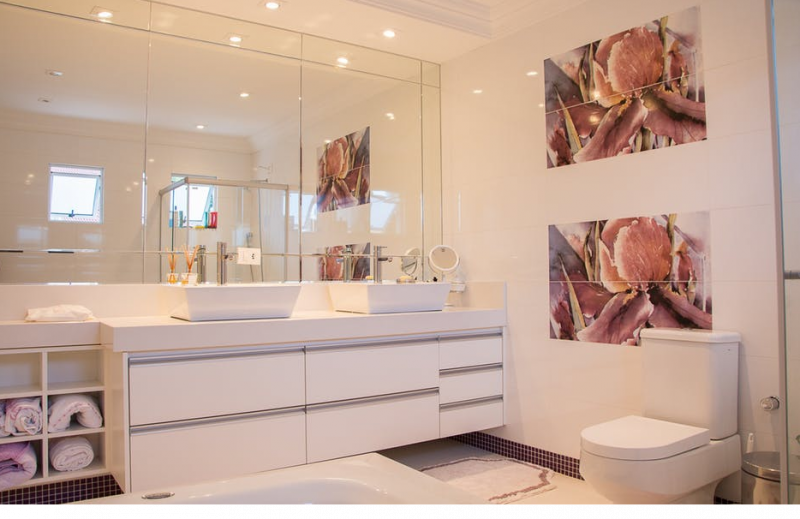Toilet partitions are divisions constructed in public restrooms to provide privacy to individuals using the facilities. They are typically made from materials like stainless steel, plastic laminate, or solid plastic, chosen for their durability and easy maintenance. These partitions come in various designs and layouts, depending on the space available and the level of privacy required.
Choosing the right toilet partitions for your restroom involves considering several factors to ensure they meet your specific needs in terms of functionality, aesthetics, durability, and budget.

Material
When choosing the material for your toilet partitions, it’s important to consider the environment and usage of the restroom. Stainless steel offers a sleek, modern look and is extremely durable, making it ideal for high-traffic restrooms. Plastic laminate is a cost-effective choice that comes in a wide range of colors and patterns, suitable for low-to-moderate traffic areas.
Solid plastic, on the other hand, is resistant to moisture and impact, which makes it a viable option for restrooms in settings such as schools or shopping malls. Each material has its own advantages and potential drawbacks, and your choice should align with your specific needs and budget.
Privacy Requirements
Privacy is a paramount consideration when selecting toilet partitions. Modern design trends lean towards ensuring maximum privacy, with floor-to-ceiling partitions becoming increasingly popular. These designs not only offer enhanced privacy but also create a more comfortable and secure environment for users.
However, such designs might not be practical or necessary in all settings and could increase costs. Therefore, it’s essential to balance privacy needs against practicality and budget. For instance, in a school setting, a certain level of visibility might be required for safety reasons while in a high-end restaurant or office building, full privacy partitions may be more appropriate.
Durability
Durability is another crucial factor to consider when choosing toilet partitions. The longevity of these partitions significantly depends on the material chosen and the level of maintenance they receive. Stainless steel and solid plastic partitions are known for their robustness and longevity, especially in high-traffic restrooms where they withstand substantial wear and tear.
Plastic laminate, while being a cost-effective solution, may not hold up as well over time in high-usage areas but could be an excellent choice for lower-traffic environments. Therefore, when considering your budget, also consider the long-term durability of the partitions and the associated maintenance costs. Choosing a highly durable option might require a larger initial investment but could save money in the long run by reducing replacement and repair costs.
Aesthetics
Aesthetics should not be overlooked when selecting toilet partitions. While their primary function is to provide privacy and durability, the visual appeal of these partitions contributes to the overall atmosphere of the restroom. A visually pleasing environment can enhance user comfort and satisfaction. Stainless steel offers a sleek, modern appearance, while plastic laminate and solid plastic come in a wide variety of colors and patterns, allowing for greater customization.
Whether you are aiming for a minimalist modern design with clean lines and neutral colors or a vibrant, eye-catching appearance, there is a toilet partition material that can meet your aesthetic preferences. Always keep in mind that the restroom is a reflection of your establishment’s cleanliness and attention to detail, so thoughtful aesthetic choices can leave a positive impression on users.
Also Read: Small Bathroom Renovation Ideas: Transforming a Tiny Space
Installation Method
The installation method of toilet partitions also plays a significant role in determining your choice. Primarily, there are four installation styles: floor-anchored/overhead-braced, ceiling-hung, floor-to-ceiling, and floor-mounted. Floor-anchored/overhead-braced installation provides stability and durability, making it suitable for high-traffic areas.
Ceiling-hung partitions offer ease of cleaning and lend a spacious feel to the restroom but require a strong ceiling structure for installation. Floor-to-ceiling installations provide the highest level of stability and privacy but require both solid floor and ceiling supports. Lastly, floor-mounted partitions are an ideal choice for restrooms with low ceilings or where an open and airy aesthetic is preferred. The installation method chosen should align with the restroom’s construction and design requirements, as well as the budget and desired privacy level.
Accessibility
Accessibility is a key aspect to consider when choosing toilet partitions. Everyone, regardless of physical ability or age, should be able to use the restrooms comfortably and safely. This means ensuring that some stalls are designed to accommodate individuals with disabilities, in compliance with the Americans with Disabilities Act (ADA) guidelines. Such stalls are usually wider to allow for wheelchair access, and equipped with safety bars for support. The height of fixtures and accessories within the stall should also be considered for easy reach.
Ease of Maintenance
Maintaining cleanliness and hygiene in restrooms is a critical aspect of facility management, and the ease of maintenance should be a key factor to consider when selecting toilet partitions. Some materials and finishes are easier to clean and more resistant to graffiti, stains, and scratches than others.
For instance, stainless steel and solid plastic are known for their ease of maintenance due to their high resistance to moisture, impact, and vandalism. Plastic laminate, while more susceptible to moisture and damage, can still be cleaned easily in low-to-moderate traffic environments. The chosen partition’s design and installation method also affect maintenance ease.
Also Read: How to Get Rid of Toilet Ring? 5 Easy Methods
Budget
Budget is a crucial determinant in the selection process of toilet partitions. Different materials and installation methods come with varying costs, and it’s essential to find a balance between quality, durability, aesthetics, and expense. Stainless steel and solid plastic partitions, while long-lasting and visually appealing, tend to be more expensive.
On the other hand, plastic laminate offers a more economical solution but may require more frequent replacement in high-traffic areas.
By carefully considering these factors, you can select toilet partitions that enhance the functionality, aesthetics, and overall experience of your restroom while staying within your budget and meeting code requirements.